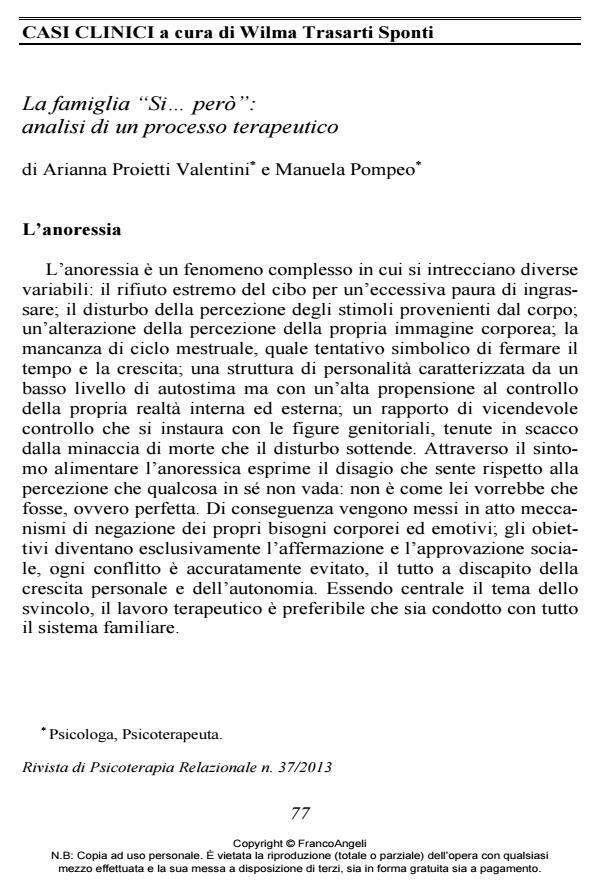The family "yes ... But": analysis of a therapeutic process
Journal title RIVISTA DI PSICOTERAPIA RELAZIONALE
Author/s Arianna Proietti Valentini, Valentina Pompeo
Publishing Year 2013 Issue 2013/37
Language Italian Pages 16 P. 77-92 File size 407 KB
DOI 10.3280/PR2013-037004
DOI is like a bar code for intellectual property: to have more infomation
click here
Below, you can see the article first page
If you want to buy this article in PDF format, you can do it, following the instructions to buy download credits

FrancoAngeli is member of Publishers International Linking Association, Inc (PILA), a not-for-profit association which run the CrossRef service enabling links to and from online scholarly content.
This work represents a small contribution to the understanding of the complex relational reality characterizing the dynamics in place within families Anorexics. The underlying hypothesis from which we start is that there are no anorexic patients but anorexic systems, where one Member is spokeswoman, through the symptoms of discomfort felt by all. The introduction of the idea that each person’s diversity is a resource available to all, allowed the disbanding of those relational nodes kept standing by the myth of the family unit. The unveiling of the emotions, and the setting of new relational modes and communication have facilitated the evolution of that process of finding that starting on the other creates the identity of each.
Keywords: Anorexia, triangulation, restructuring, emotion, metaphor
Arianna Proietti Valentini, Valentina Pompeo, La famiglia "Si" però": analisi di un processo terapeutico in "RIVISTA DI PSICOTERAPIA RELAZIONALE " 37/2013, pp 77-92, DOI: 10.3280/PR2013-037004